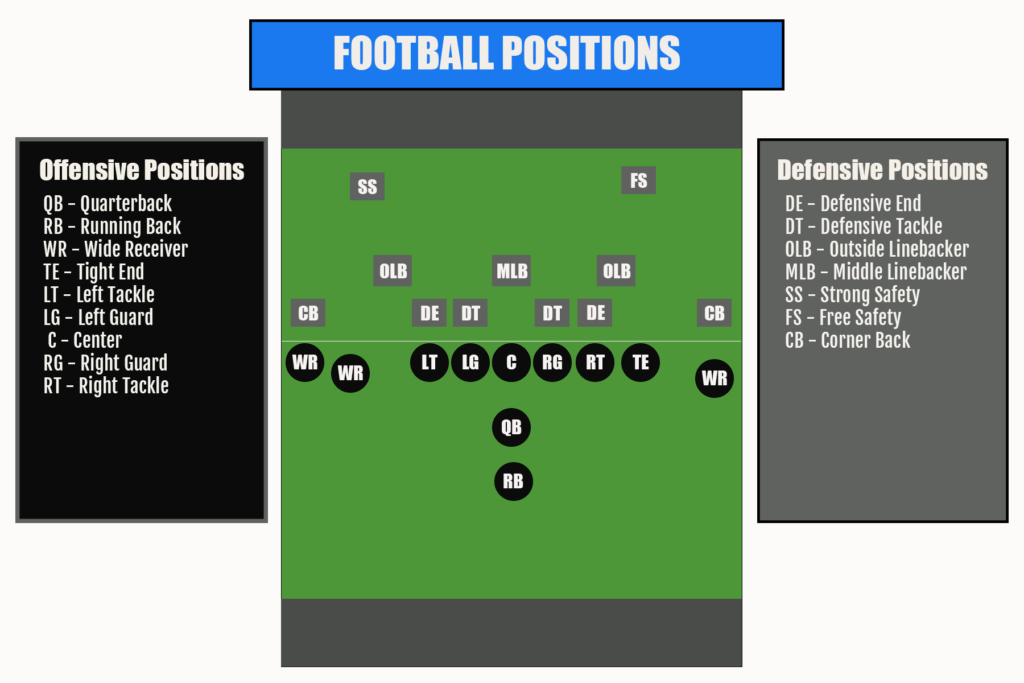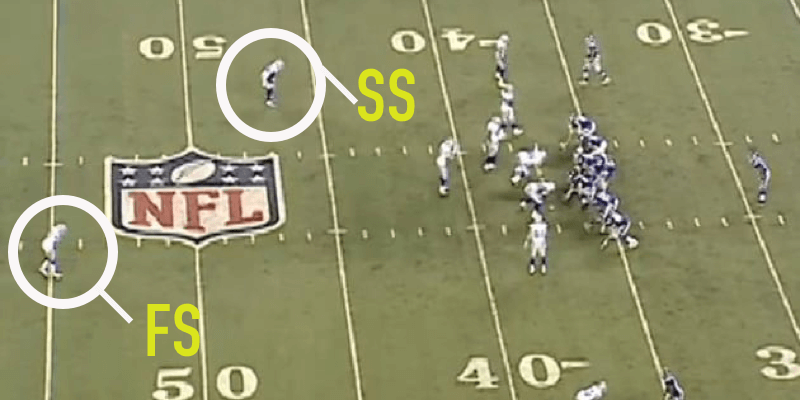Safeties are one of the most important and versatile defensive positions in all of football. They are considered to be the last line of defense and are essential for stopping the run and providing pass coverage.
There are two different safety positions, a strong safety and a free safety. Due to the similarities people are often are confused on what the difference is between these two positions.
Strong safeties are a hybrid between a linebacker and a corner back. They are typically larger, stronger and lineup closer to the line of scrimmage than a free safety. Their primary focus is to stop the run, but they also assist in pass coverage. Free safeties on the other hand are faster, more athletic and are the last line of defense. They tend to be more pass-minded but also help support the run when needed.
In this article we will discuss more in-depth on what the differences are between a free safety and a strong safety. As well as discuss some important characteristic that all safeties have in common.
Let’s get started.
The Safety Position
The safety position (S) is considered a defensive back (covers receivers) and is the last line of defense. They will typically line up about ten to fifteen yards behind the line of scrimmage and will cover wide receivers, running backs, tight ends and will come up and support the run on running plays.
There are two different safety positions, a strong safety (SS) and a free safety (FS). Their respective roles on defense might vary upon the defensive scheme or play call, but they will generally be involved in pass coverage toward the middle and sideline of the field.
Although both of these positions are similar, there are some key differences regarding their role on the defense.
Let’s take a closer look at both the strong and free safety position and discuss some similarities and differences.

Strong Safety
The strong safety position is essentially a hybrid between a linebacker and a corner. Their primary responsibility is to stop the run, but are also expected to cover and blitz during passing plays.
They are called strong safety because they line up on the “strong side” of the offense. Meaning they will line up on the side of the field where the majority of the offensive player’s lines up. Due to their role on defense they tend to line up closer to the line of scrimmage than the free safety.
This allows them to be ready to stop the run, but also blitz or cover running backs and tight ends on passing plays.
Most strong safeties are built more like linebackers and are typically bigger and more powerful than free safeties. This power allows them to shed blockers and ensure they attack the offense quickly.
Strong Safeties also need to be fast as they tend to cover a lot of the field and are a key component in both the running and passing game.
Free Safety
The free safety (FS) position is much different than the strong safeties. They are typically built more like cornerbacks and are faster and smaller when compared to the strong safety and linebacker positions.
A free safety is the defensive player that would “cover” the quarterback on passing plays. Since the quarterback typically remains in the pocket, the FS is free to blitz or help other teammates in pass coverage.
During running plays, free safeties typically go unblocked allowing them to come up and attack when they see the play develop.
They tend to line up about ten to fifteen yards behind the line of scrimmage and can have a number of responsibilities depending upon the defensive play and scheme.
Free safeties or best known for their pass covering skills and are the last line of defense on the football field. Most of them will sit back, survey the field, and attack where needed.
They also play an important role in stopping the run and will come up, avoid blockers, and make key tackles on running plays.
Strong Safety vs. Free Safety

A strong safety is considered to be a hybrid between a linebacker and a defensive back. They line up on the strong side of the field and are built more like linebackers. They are primarily responsible for stopping the run but are also involved in pass coverage.
Free safeties are much different than the strong safety position. The free safety is more like an extra cornerback (covering specialists), that are quick and able to cover against deep passing plays. They are more pass-minded but will also help support the run as needed.
Strong Safety
- Hybrid between a linebacker and cornerback
- Line up on the strong side of the field
- Typically, more powerful and stronger than free safeties
- Generally, cover running backs, h backs and tight ends on passing plays
Free Safety
- Considered to be more like a corner back
- Faster & quicker but are still good tacklers
- Survey the field and attack where needed
- Are more “free” as they are the player that would “cover” the QB
What Makes a Good Safety?
Although there some key differences between the strong and free safety positions, there are also a lot of similarities and qualities each must have.
Here is a quick look at some of the traits, qualities and skills a player must have in order to play the safety position at a high level.
Good Size
A necessary and common attribute of a safety is that they need to have good size. Bigger safeties that can still move well are important as they will need to be able to shed blockers, make tackles and attack the offense.
Good Vision
Perhaps one of the most important qualities a safety must have is good vision. They need to be able to survey the field and identify whether it’s a pass or run quickly and attack and support where needed.
Both Quick & Fast
Speed and quickness is an essential attribute of both safety positions. They need to be able to cover fast receivers and come up quickly to tackle running backs. Covering ground quickly is something all safeties need to be able to do.
Good Instincts
Safeties need to be able to see plays as they develop, read them, and then react. If a player playing the safety position takes too much time to react, then the play may already pass them by. The elite safeties are able to recognize a running play and be able to identify when it’s a passing play and quickly react accordingly.
Tough & Strong
Safeties can’t shy away from contact. They are often leading tacklers on their teams and need to be able to tackle running backs, wide receivers and players of all sizes. Simply put, safeties need to be agile, athletic enough to cover receives, but strong enough to get in the trenches and make tackles.
For more information on what makes a great safety check out this article by footballadvantage.com.
Final Thoughts
As we discussed in this article there are two different safety positions in the game of football, a free safety and a strong safety.
These two safety position are one of the more challenging positions to play in football. They need to have a diverse skill-set and body type unlike many other positions.
Although both a free and a strong safety play similar positions they have unique responsibilities and skillset that may vary depending upon the defensive scheme.
I hope this article has helped provide you with some insight on the differences and similarities between these two safety positions.

